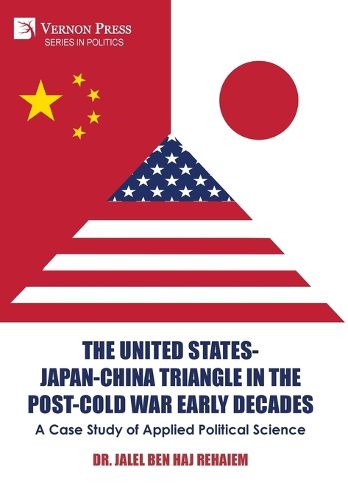Readings Newsletter
Become a Readings Member to make your shopping experience even easier.
Sign in or sign up for free!
You’re not far away from qualifying for FREE standard shipping within Australia
You’ve qualified for FREE standard shipping within Australia
The cart is loading…






This title is printed to order. This book may have been self-published. If so, we cannot guarantee the quality of the content. In the main most books will have gone through the editing process however some may not. We therefore suggest that you be aware of this before ordering this book. If in doubt check either the author or publisher’s details as we are unable to accept any returns unless they are faulty. Please contact us if you have any questions.
This book examines the post-Cold War U.S.-Japan-China Triangle through the lens of two core international relations variables: power and security. Following the collapse of the Soviet Union, the U.S., as the sole superpower, aimed to prevent the rise of any rival in Asia or elsewhere that could threaten its global position. This approach aligns with a realist view of international relations, championed by scholars like John Mearsheimer, tracing back to the principles of interstate competition seen as far back as the 1648 Westphalia Treaty and the Peloponnesian War in the 5th century BC. The book argues that the U.S. aims to prevent China from becoming a revisionist power by strategically using its alliance with Japan as a deterrent within the American-led regional order.
Historically, the U.S.-Japan-China relationship has seen consistent U.S. support for Japan, often at China's expense, except during World War II. Since the 19th century, the U.S., alongside European powers, pressured China through treaties such as the 1844 Wanghia Treaty and direct interventions like the Opium Wars. Japan's industrialization after the Meiji Restoration led to imperialist ambitions that eventually clashed with Western interests, culminating in Japan's 1941 attack on Pearl Harbor-a short-lived break in the U.S.-Japan alignment. After the Communist rise to power in China in the late 1940s, the U.S. renewed its strategic ties with Japan to contain Chinese influence, solidified by the 1951 security treaty.
$9.00 standard shipping within Australia
FREE standard shipping within Australia for orders over $100.00
Express & International shipping calculated at checkout
This title is printed to order. This book may have been self-published. If so, we cannot guarantee the quality of the content. In the main most books will have gone through the editing process however some may not. We therefore suggest that you be aware of this before ordering this book. If in doubt check either the author or publisher’s details as we are unable to accept any returns unless they are faulty. Please contact us if you have any questions.
This book examines the post-Cold War U.S.-Japan-China Triangle through the lens of two core international relations variables: power and security. Following the collapse of the Soviet Union, the U.S., as the sole superpower, aimed to prevent the rise of any rival in Asia or elsewhere that could threaten its global position. This approach aligns with a realist view of international relations, championed by scholars like John Mearsheimer, tracing back to the principles of interstate competition seen as far back as the 1648 Westphalia Treaty and the Peloponnesian War in the 5th century BC. The book argues that the U.S. aims to prevent China from becoming a revisionist power by strategically using its alliance with Japan as a deterrent within the American-led regional order.
Historically, the U.S.-Japan-China relationship has seen consistent U.S. support for Japan, often at China's expense, except during World War II. Since the 19th century, the U.S., alongside European powers, pressured China through treaties such as the 1844 Wanghia Treaty and direct interventions like the Opium Wars. Japan's industrialization after the Meiji Restoration led to imperialist ambitions that eventually clashed with Western interests, culminating in Japan's 1941 attack on Pearl Harbor-a short-lived break in the U.S.-Japan alignment. After the Communist rise to power in China in the late 1940s, the U.S. renewed its strategic ties with Japan to contain Chinese influence, solidified by the 1951 security treaty.